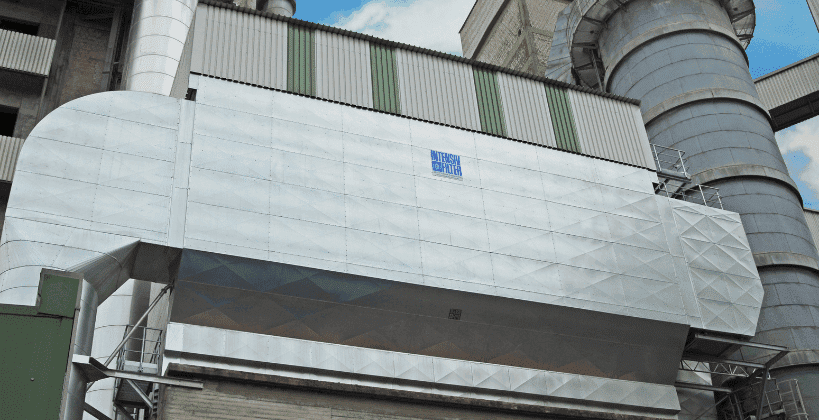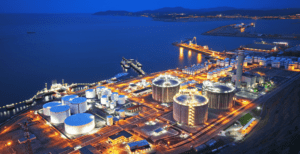HEPA filters vs bag filters for industrial dust is a comparison that plays a pivotal role in designing effective air pollution control systems across various industries. Industrial dust control is critical to maintaining safe working environments, ensuring process efficiency, and complying with emission regulations. Among the most commonly discussed filtration technologies in this field, these two solutions stand out for their effectiveness. Each has its distinct structure, function, and application scope—but one lingering question remains: which is the better choice? The answer isn’t as straightforward as choosing one over the other. Instead, the decision depends on several factors such as dust type, particle size, volume, air temperature, and specific industrial requirements. This blog explores the differences, advantages, limitations, and ideal use cases of both HEPA and bag filters in industrial dust control applications.
Understanding Bag Filters in Industrial Dust Collection
Bag filters, often found in baghouse systems, are a traditional and highly effective method of filtering large volumes of air contaminated with particulate matter. These systems typically consist of cylindrical or envelope-shaped fabric bags made from various materials like polyester, Nomex, fiberglass, or PTFE. As dust-laden air passes through the fabric, particulates are captured, and clean air exits the system.
Bag filters excel in industries such as cement production, metal foundries, power plants, and food processing, where dust levels are high, and the particles can vary widely in size. Their ability to handle high dust loads and operate continuously for long durations makes them reliable workhorses in heavy-duty industrial environments.
Additionally, bag filters can be custom-engineered for different chemical resistances, temperatures, and particulate types. Their design flexibility allows them to be scaled for large air volumes without a significant drop in filtration efficiency.
What Makes HEPA Filters Unique?
High-Efficiency Particulate Air (HEPA) filters are designed to capture at least 99.97% of particles that are 0.3 microns in diameter. HEPA filters use a dense mat of randomly arranged fibers, typically made from fiberglass, which targets particles using diffusion, interception, and impaction mechanisms. This extremely high efficiency makes HEPA filters ideal for environments that require extremely clean air—such as pharmaceutical production, electronics manufacturing, cleanrooms, and laboratories.
However, HEPA filters have limitations when it comes to industrial dust collection. While excellent at capturing ultrafine particles, they aren’t well-suited for environments with high particulate loading or sticky, heavy dust. They also require frequent replacement if exposed to such conditions, making them less practical or cost-effective for many industrial-scale dust applications.
Connettiti con noi ora
Performance Comparison: HEPA Filters vs Bag Filters for Industrial Dust
When deciding between HEPA filters and bag filters for industrial dust collection, it’s important to understand how they differ in key performance areas:
Efficienza di filtrazione
HEPA filters offer superior filtration of submicron particles, which makes them highly effective in sensitive environments. Bag filters, while typically less efficient on ultrafine particles, are excellent at capturing larger particulates and can still reach impressive efficiencies (up to 99.9%) with proper design and fabric selection.
Airflow Resistance
Due to their dense fiber construction, HEPA filters create higher resistance to airflow, which can reduce system efficiency if not properly managed. Bag filters generally have lower pressure drops and can maintain high airflow rates over longer durations with pulse-jet cleaning systems.
Dust Holding Capacity
Bag filters are designed to handle larger volumes of particulate matter without clogging. This makes them better suited for dirty environments like cement plants, foundries, and waste management facilities. HEPA filters tend to clog faster when used in dusty environments, increasing operational costs due to frequent replacements.
Maintenance and Lifecycle Costs
Bag filters have a longer operational life in high-dust applications due to their ability to regenerate through inbuilt cleaning mechanisms like reverse air or pulse-jet. HEPA filters, lacking this feature, require replacement once saturated. This contributes to higher recurring costs in industrial settings.
When to Use HEPA Filters and When to Use Bag Filters
Choosing between HEPA and bag filters depends heavily on the specific industry needs and operating conditions. In many cases, HEPA filters and bag filters are used together in multi-stage filtration systems, where the bag filter acts as a pre-filter and the HEPA filter handles final polishing.
Suitable Applications for Each Filter Type
Bag Filters Are Ideal For:
Cement manufacturing
Metal processing plants
Thermal power stations
Food and grain processing
Waste incineration facilities
Chemical powder handling
HEPA Filters Are Best For:
Cleanroom environments
Electronics manufacturing
Pharmaceutical production
Medical device facilities
Laboratories with strict air purity needs
Advantages of Bag Filters
High dust-holding capacity and longer service intervals
Effective at capturing a wide range of particle sizes
Can be customized for temperature and chemical resistance
Suitable for high-volume, continuous operation
Lower maintenance and operational costs in dusty environments
Why Many Industries Still Prefer Bag Filters Over HEPA Filters
While HEPA filters offer unmatched efficiency in capturing microscopic particles, bag filters remain the go-to choice for many industries dealing with high dust volumes. Their rugged construction, cost-effectiveness, and ability to self-clean give them an edge in most industrial applications. They provide a balance between filtration efficiency and practical durability that HEPA filters cannot match in such environments.
Moreover, bag filters offer more flexible configurations and can be installed in a variety of system designs—vertical, horizontal, modular, or compartmentalized. This adaptability ensures better integration into existing systems, something that HEPA filters might lack due to their more delicate and precise nature.
Integrating Both Filters for Optimal Results
For industries that need both large particle removal and ultra-clean air, hybrid systems using both bag filters and HEPA filters provide the best of both worlds. In such setups, bag filters act as the first line of defense, removing heavy particulate matter before air passes through HEPA filters for final purification.
This two-tier approach ensures longevity for HEPA filters while achieving high overall air quality standards. It’s particularly useful in pharmaceutical industries where cross-contamination must be minimized and also in laboratories dealing with hazardous airborne materials.
Final Verdict: Which Filter Is Better?
So, are HEPA filters better than bag filters for industrial dust? Not necessarily. Each filter type is engineered for a specific role, and the “better” option depends on your application. HEPA filters are unmatched in particle retention efficiency but are not built for environments with high dust volumes or coarse particles. Bag filters, while less effective at capturing ultrafine particles, provide unmatched durability, low maintenance, and high efficiency for general industrial dust collection.
For most industries, bag filters are the preferred primary filtration method due to their cost-efficiency and adaptability. HEPA filters, on the other hand, serve best in controlled environments that require the highest possible air purity. Therefore, the decision should be based on operational needs, air quality targets, and total cost of ownership.



